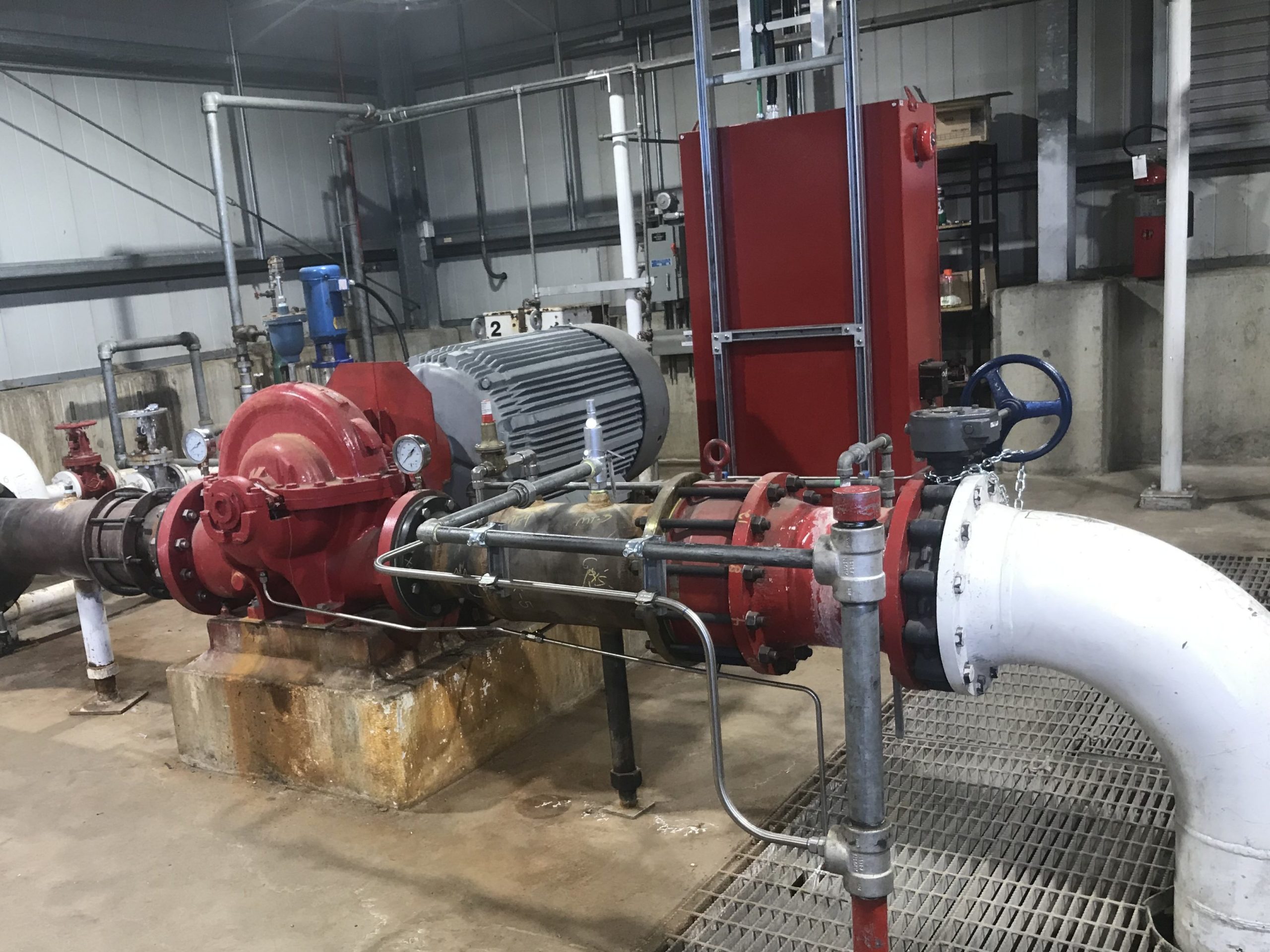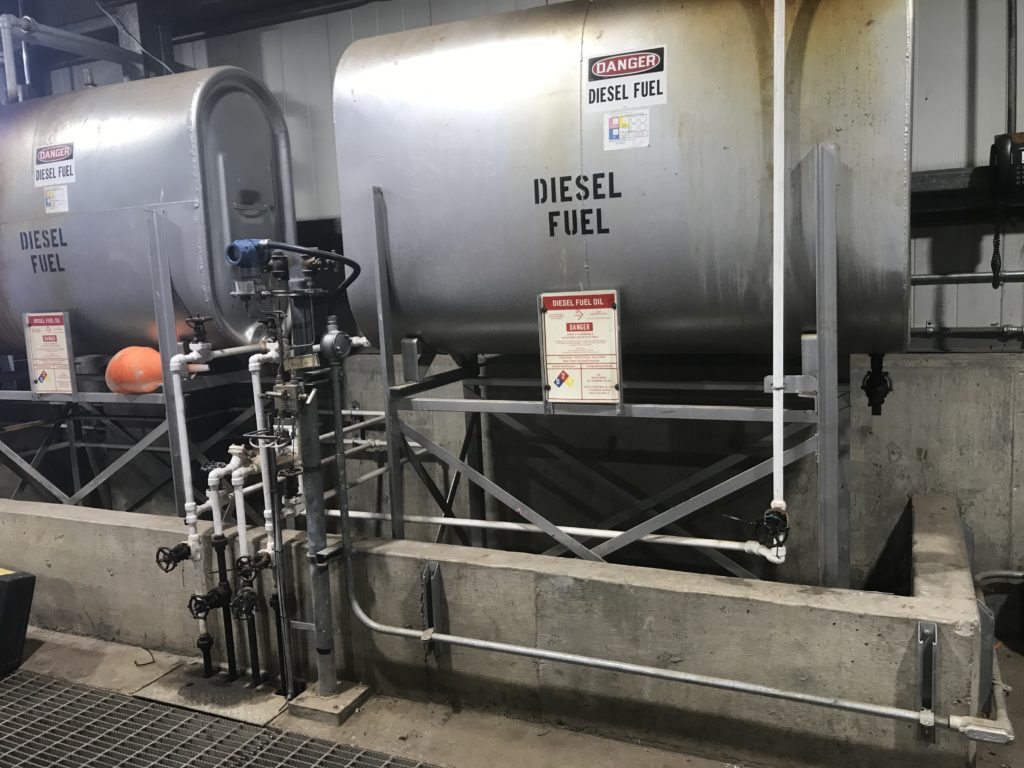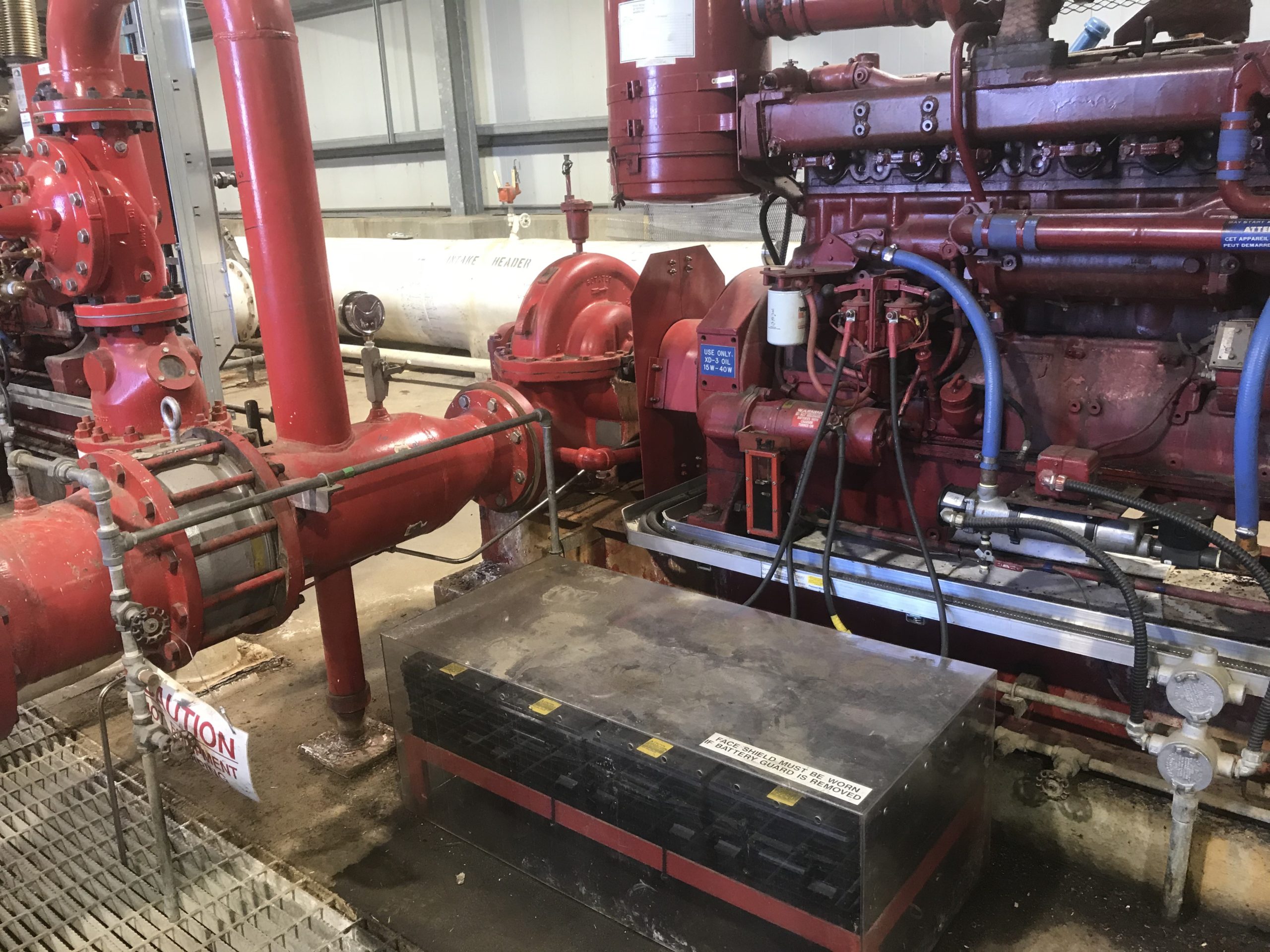When working with water-based fire suppression systems, having a firewater pump that can meet all of the system’s demands is extremely important. This fact is recognized by the National Fire Protection Association (NFPA), and they actually have a standards handbook known as NFPA 25 that contains a section detailing requirements for weekly fire pump inspections. Adherence to these inspections can ensure that your firewater pumps are prepared to meet the demand needed when a fire occurs, which in turn helps protect your buildings and assets. These inspection requirements cover a wide range of system needs including temperatures, oil levels, and even valve positioning.
The first set of inspection requirements ensure the pump house itself provides a suitable environment for proper pump functionality. You will need to check the following conditions:
-
- A temperature of no less than 4°C (40°F) for pump rooms with electric motors or diesel engine pumps with engine heaters.
- A temperature of no less than 21°C (70°F) for pump rooms with diesel engine pumps without engine heaters.
- Ventilating louvers are free to operate.
- Excessive water does not collect on the floor.
- Coupling guard is in place.
The temperature of the pump house is important to prevent freezing, which may prevent water flow or damage piping and pumps. The venting louvers are required to allow proper climate control within the pump room to prevent freezing as well as provide adequate fresh air for diesel combustion if a diesel motor is in use. Once these have been checked, you can move on to the next set of inspection criteria.
Once the pump house has been inspected, the next step is to inspect the pump system conditions for any issues. The following conditions must be checked:
-
- The pump suction and discharge and bypass valves are fully open.
- Piping is free of leaks
- Suction line pressure gauge reading is within acceptable range.
- System line pressure gauge reading is within acceptable range.
- Suction reservoir has the required water level.
- Wet pit suction screens are unobstructed and in place.
- Water flow test valves are in the closed position, the hose connection valve is closed, and the line to test valve is free of water.
It should be noted that while NFPA 13 states that electronically monitored control valves may be inspected monthly, NFPA 25 overrules this requirement specifically for valves associated with fire pumps and mandates weekly inspections. It is important to address piping leaks as they can seriously impair the system. Care should be taken however since some elements of the system such as drip pockets require a small collection of water to remain functional. This water build up should not be confused for a leak since it is required to prevent the component from failing. In terms of pressure readings, NFPA 25 states that if the water for a system is supplied by a tank, the suction line pressure gauge should give a reading in psi of about 0.433 times the height of the water tank in feet.
It should also be noted that if the pump is not running, the system line pressure gauge should read the same as the suction line pressure gauge. This is because the pressure will only increase when the pump is actually in operation. In the case that a sliding gauge is utilized to measure the water level in the suction reservoir, then the gauge should be moved during inspection to ensure it has not become stuck in position. For wet pit suction screens, the trash rack, two sets of screens, and pump suction strainer at the bottom of the submerged pump assembly should be checked. This step is important since even the smallest buildup of debris can damage the pump or clog the pipes. After checking the test valves, it is important to make sure the water has been fully drained from the test header to prevent freezing and damage to the system.

NFPA 25 has a specific set of inspection requirements for electrical fire pump systems which are as follows:
-
- Controller pilot light is illuminated.
- Transfer switch normal pilot light is illuminated.
- Isolating switch is closed – standby source.
- Reverse phase alarm pilot light is off, or normal phase rotation pilot light is on.
- Oil level in vertical motor sight glass is within acceptable range.
- Power to pressure maintenance pump is provided.
When inspecting electrical pumps, the transfer switch may not be present. This is because transfer switches are only installed when a pump has an alternative power supply available. When multiple power sources are available, you must also ensure that the isolating switches for every power source is closed. While reverse phase is very unlikely to be an issue after a pump has been installed and checked, there is still a chance of an issue, which is heightened if work is conducted on the electrical supply system. Be mindful that in addition to the listed requirements, a general inspection of the condition of the electrical components should be completed to ensure functionality. This can include checking for rodent nesting, broken parts, unlocked doors, or improperly labeled boards as a few examples.
Just like electric water pumps, diesel water pumps also have a unique set of inspection requirements that need to be checked weekly. The weekly inspection for diesel pumps should cover the following:
-
- Fuel tank is at least two-thirds full.
- Controller selector switch is in the auto position.
- Both batteries’ voltage readings are within acceptable range.
- Both batteries’ charging current readings are within acceptable range.
- Both batteries’ pilot lights are on or battery failure pilot lights are off.
- All alarm pilot lights are off.
- Engine running time meter is reading.
- Oil level in right angle gear drive is within acceptable range.
- Crankcase oil level is within acceptable range.
- Cooling water level is within acceptable range.
- Electrolyte level in batteries is within acceptable range.
- Battery terminals are free from corrosion
- Water-jacket heater is operating.
The fuel tanks need to be filled to at least two-thirds of their capacity to ensure the pump has sufficient fuel to run for extended periods of time in a fire scenario. You should also make sure that the fuel is consumed within one year to prevent the risk of contamination and ensure that the pump can run when needed.

While this list of inspection requirements may seem long, it only covers a small part of everything that needs to be inspected in your fire pump systems. For example, steam pumps need to be inspected to make sure their pressure gauges are reading at acceptable levels. There are also other weekly inspection requirements, as well as monthly, quarterly, semiannually, and annually inspection requirements.
NFPA has released a checklist template containing the requirements for weekly inspections. While the list is not exhaustive of all inspection requirements, it provides a way to document your weekly inspections for record keeping. Please contact Rotaflow if you have any questions about our inspection capabilities or wish to set up an inspection schedule for your firewater pumps.



